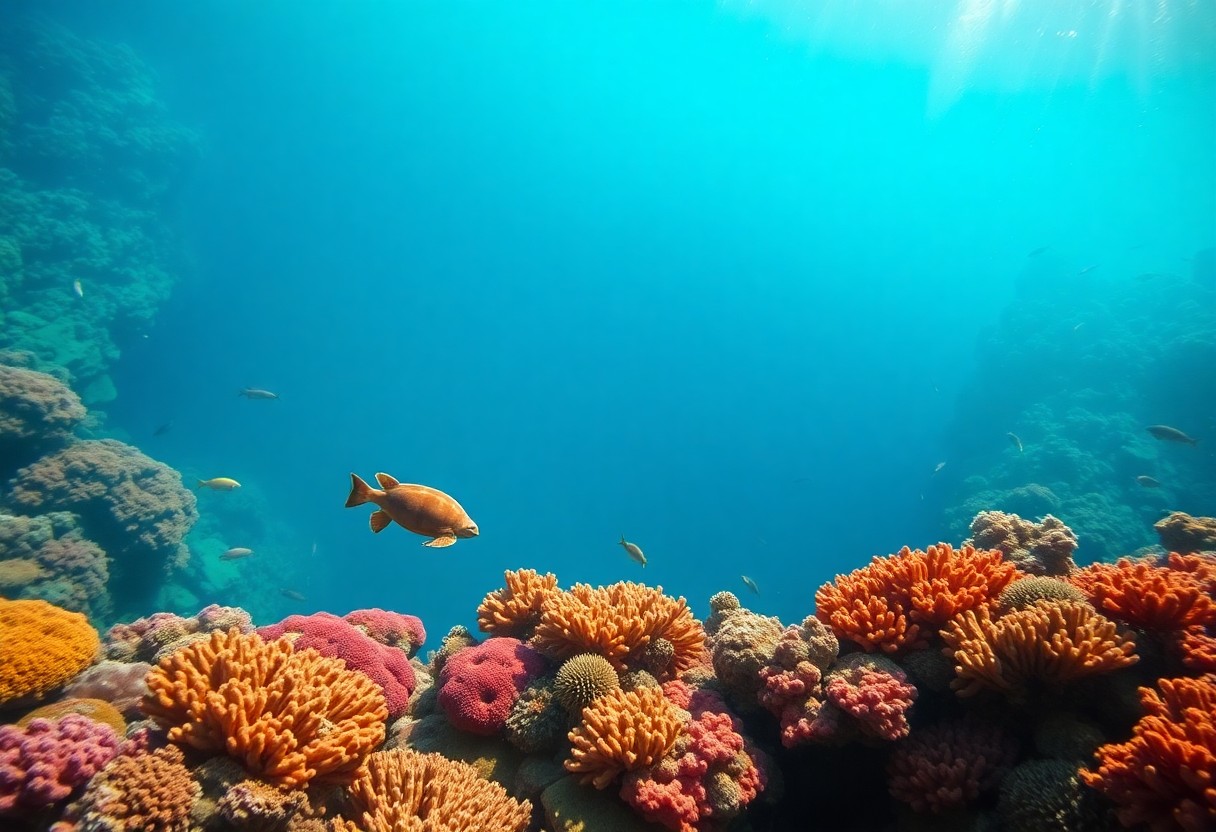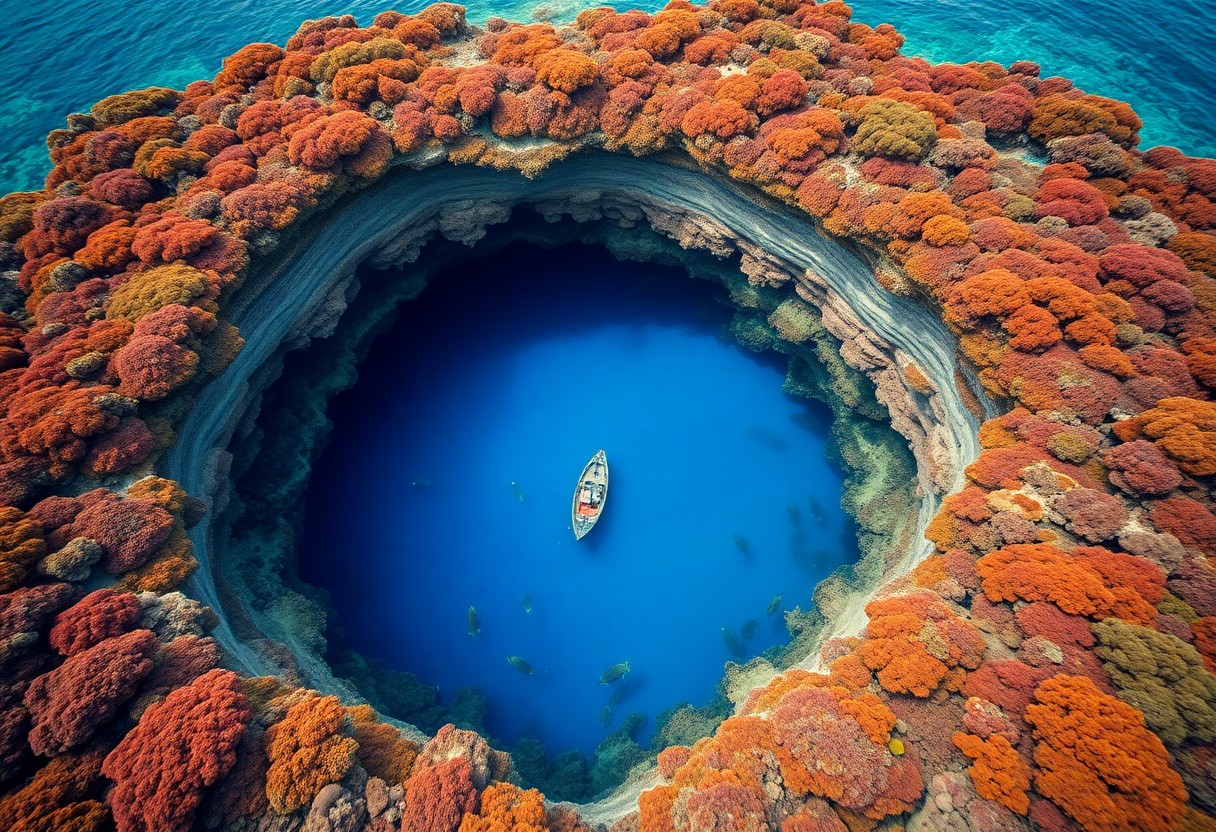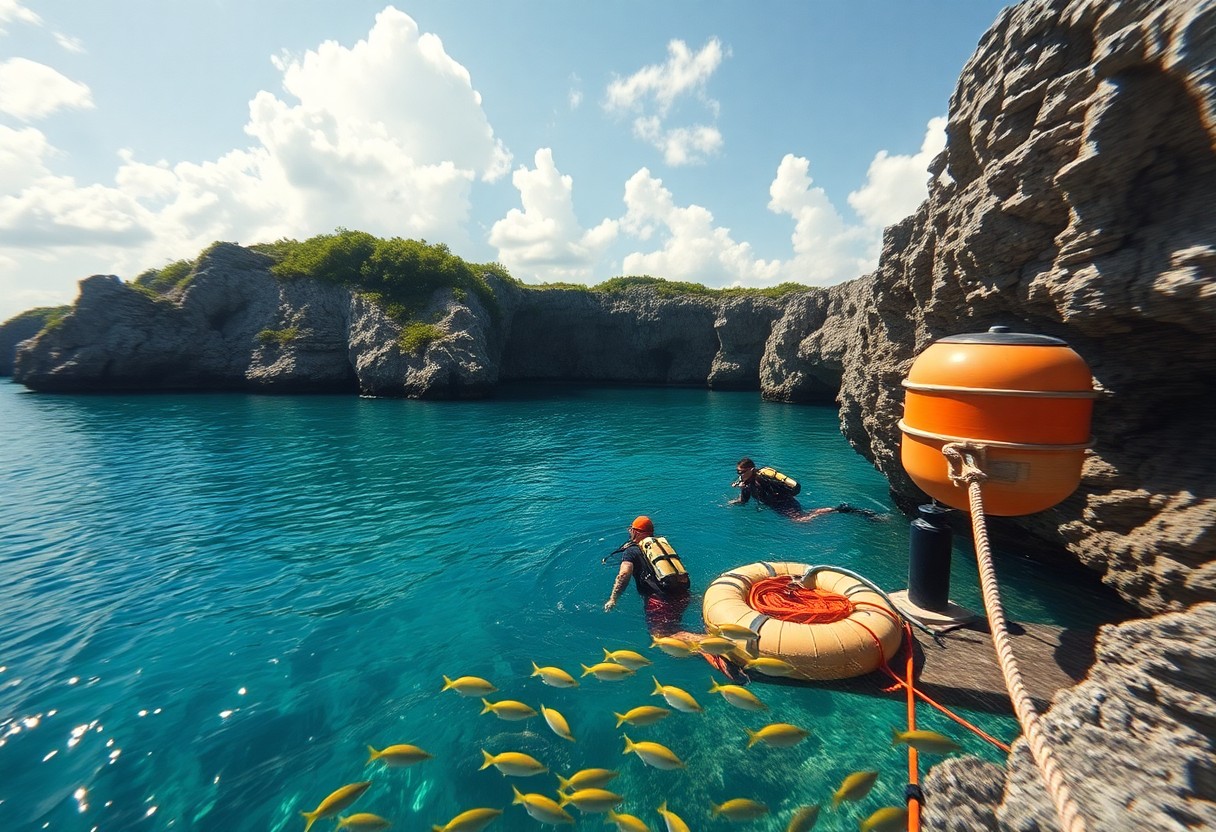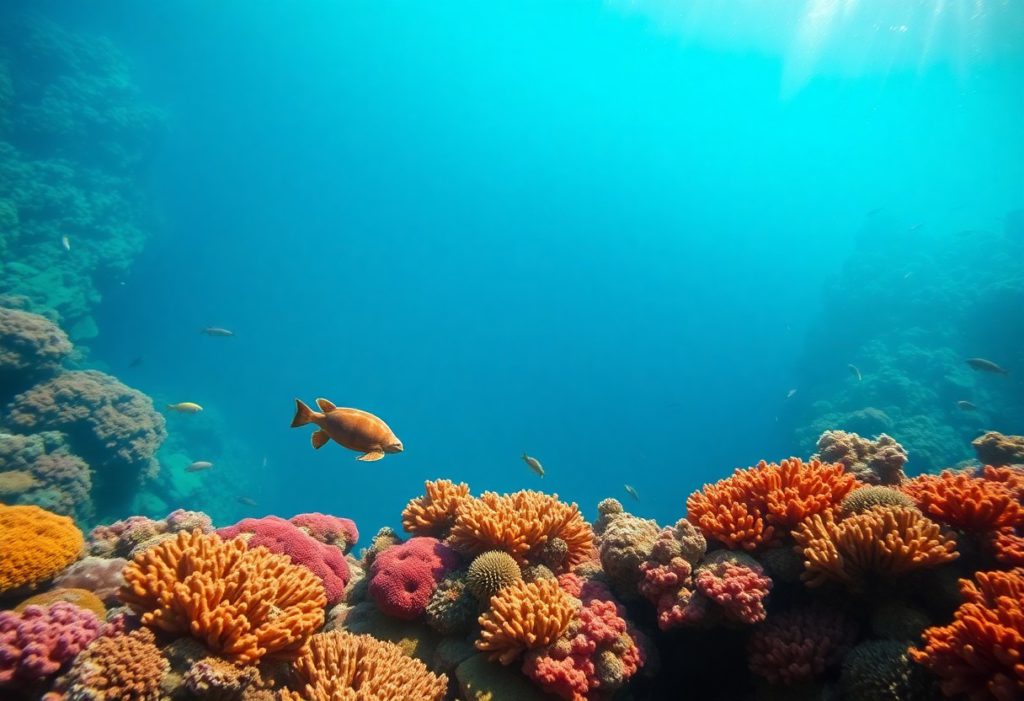For countless divers and snorkelers, the chance to encounter the breathtaking beauty of the Great Blue Hole in Belize stands as a dream realised. This renowned UNESCO World Heritage site provides unmatched underwater experiences that are truly memorable. Famous for its striking azure waters, remarkable geological formations, and diverse marine life, this iconic Belize diving hotspot beckons you to plunge into its astonishing depths. Here, you might encounter sharks and explore the vibrant coral reefs, alive with marine activity. This detailed guide equips you with all the necessary insights to optimise your blue hole diving experience while ensuring your safety and enabling unforgettable memories.

Discover the Great Blue Hole: A Natural Marvel Awaits
The Great Blue Hole is acclaimed as one of the most breathtaking natural wonders on our planet. Formed thousands of years ago during the last Ice Age, this immense marine sinkhole reaches an impressive depth of over 400 feet and stretches approximately 1,000 feet in diameter. The stunning azure waters, paired with its unique geological features, make it an unmissable destination for any adventure seeker exploring the captivating landscapes of Belize. As you gaze into its profound depths, you become enchanted by the allure of a treasure chest of marine life and stunning underwater vistas, making it a top choice for both divers and snorkelers in search of adventure.
Dive Deep into the Geological Wonders and Unique Ecosystem
The Great Blue Hole is more than just a visual feast; it is the result of a series of complex natural processes that have developed over countless millennia. As sea levels fluctuated throughout history, what began as a limestone cave system morphed into the vast underwater sinkhole we see today. This unique ecosystem supports a myriad of marine life, including vibrant corals, formidable reef sharks, and a diverse range of fish species, illustrating the delicate balance of existence within this expansive underwater cavern. Each visit offers the chance to witness the rich biodiversity that calls this extraordinary site home, underscoring its significance as a crucial area for marine conservation efforts.
Why the Great Blue Hole is a Must-Visit for Divers and Snorkelers
Your diving or snorkelling journey in the Great Blue Hole promises an extraordinary experience brimming with awe-inspiring sights and exhilarating encounters. With exceptional visibility often reaching up to 150 feet, you will have the unique opportunity to observe various marine species thriving in their natural habitats. The attraction lies not only in the stunning geological structure but also in the surrounding biodiversity, coupled with the chance to explore impressive stalactites and stalagmites formed deep within the cave. This fusion of breathtaking visuals and exhilarating underwater adventures makes it a dream destination for divers and snorkelers seeking unparalleled experiences in a remarkable setting.
The irresistible charm of diving and snorkelling at the Great Blue Hole lies in the enchanting mix of awe-inspiring visuals and thrilling encounters with marine life. Divers can navigate through caverns adorned with massive stalactites, while snorkelers drift above colourful coral formations teeming with diverse marine creatures. Moreover, diving in the Great Blue Hole presents opportunities to spot inquisitive sharks and other dynamic sea inhabitants residing in this unique ecosystem. Few dive locations globally can offer such a captivating blend of geological wonders and ecological richness, guaranteeing an unforgettable experience for adventurers in search of the ultimate underwater escapade.
Key Skills and Preparations for Your Diving Expedition
Preparation plays a critical role before you embark on your diving adventure in the Great Blue Hole. Start by familiarising yourself with the marine environment and the potential underwater conditions you may encounter, such as currents and variations in visibility. Practising buoyancy control and equalisation techniques will significantly enhance your diving experience, allowing you to explore the depths with confidence and ease. Additionally, a thorough understanding of dive planning, safety protocols, and communication signals will facilitate a smooth and enjoyable adventure as you marvel at the stunning underwater beauty that awaits you in this remarkable locale.
Get Equipped: Essential Gear for Diving and Snorkelling
Your overall experience diving at the Great Blue Hole will largely depend on the quality of your equipment. Essential gear includes a wetsuit to maintain warmth, a buoyancy control device (BCD) for stability, a regulator for breathing, and a mask and snorkel for surface exploration. Do not underestimate the significance of packing fins to enable smooth movement through the water and weights to assist with your descent. High-quality underwater cameras can also help you capture the breathtaking marine life and stunning underwater scenes, so ensure you have the right equipment to maximise your adventure.
Understanding Certification and Experience Required for Diving the Great Blue Hole
To fully appreciate the exceptional diving opportunities the Great Blue Hole offers, you generally need at least an Open Water Diver certification, which confirms you possess the foundational skills required for safe diving. Numerous dive shops in Belize provide guided tours for less experienced divers, allowing you to explore this incredible site alongside a certified instructor. It’s important to note that advanced dives might necessitate higher certification levels, such as Advanced Open Water or Deep Diver certifications, which prepare you for more challenging diving conditions and deeper dives.
While an Open Water Diver certification is often enough for the shallower areas of the Great Blue Hole, venturing into deeper sections requires more experience. Advanced level divers are encouraged to have logged at least 24 dives before attempting the depths of the Great Blue Hole. This experience ensures that you possess the necessary skills to effectively navigate potential challenges, such as depth perception and dive planning. If you’re keen to enhance your diving prowess, consider pursuing specialty certifications focused on deep diving or wreck diving, which can significantly broaden your skill set and confidence underwater.
Remarkable Dive Sites: Uncover the Wonders Beneath the Waves
Every exploration of the Great Blue Hole unveils a world of wonder just beneath the surface, with depths reaching 407 feet. As you descend, stunning stalactites and unique underwater formations greet you, revealing the geological history of the region. Visibility can be outstanding, often exceeding 100 feet, allowing you to fully appreciate the vibrant colours and remarkable underwater landscapes. While the experience is awe-inspiring, diving here requires skill and preparation, as conditions can be unpredictable; therefore, advanced certification is highly recommended to fully enjoy this magnificent underwater sanctuary.
Marine Encounters: Spotting Sharks, Turtles, and More
Diving in the Great Blue Hole offers exhilarating encounters with some of the ocean’s most captivating inhabitants. You can expect to see bull sharks lurking in the depths, alongside graceful loggerhead turtles gliding through the water. Schools of vibrant tropical fish create an explosion of colour, while occasional sightings of rays and nurse sharks heighten the thrill of your underwater adventure. The diverse marine ecosystem guarantees that each dive will present you with new and unforgettable wildlife encounters, making every visit truly special.
Explore Must-See Dive Sites Beyond the Great Blue Hole
While the Great Blue Hole is undoubtedly a highlight, Belize boasts numerous exceptional dive sites that should not be overlooked. Places like Shark Ray Alley offer thrilling snorkelling experiences alongside nurse sharks and stingrays, while the Hol Chan Marine Reserve enchants visitors with its rich biodiversity, showcasing everything from vibrant coral gardens to large pelagic fish. For a unique diving experience, venture to Turneffe Atoll, where you can explore stunning wall dives and encounter exotic species in their lush habitats. Each of these locations provides a different perspective of the underwater world, solidifying Belize as a diver’s paradise. Furthermore, visiting sites like Glover’s Reef allows you to explore patch reefs brimming with marine life, ensuring your underwater experiences are filled with wonder and amazement.

Strategising Your Trip: Logistics and Best Practices
Planning your adventure to the Great Blue Hole requires meticulous consideration of logistics and best practices to ensure a seamless experience. Begin by determining the duration of your stay, as diving or snorkelling around the Blue Hole may necessitate at least a couple of days. Reserve accommodations conveniently located in Belize City or San Pedro to facilitate easy access. Consider the travel time to the Blue Hole, which typically involves a boat trip lasting up to two hours. Lastly, pack appropriately for both diving and snorkelling adventures, including your own gear if preferred, and ensure you have travel insurance that covers diving activities for peace of mind during your journey.
Optimal Timing: Seasonal Insights for Perfect Diving Conditions
The most advantageous time to visit the Great Blue Hole is from April to June and September to November, when weather conditions tend to be stable, water temperatures remain warm, and visibility is at its highest. During these months, you’re more likely to encounter vibrant marine life and clearer waters, creating an ideal setting for both diving and snorkelling. It’s advisable to avoid the peak hurricane season, which spans from June to November, as weather disturbances may affect your plans and diving conditions, potentially leading to less than optimal experiences.
Selecting the Right Tour Operator: Important Considerations
Choosing the right tour operator is vital for your Blue Hole experience. Ensure they possess appropriate credentials, such as certification from the Belize Tourism Board, and have ample experience leading trips to the Great Blue Hole. Look for operators that emphasise safety by providing high-quality gear and knowledgeable guides who can share valuable insights about the area. Reading reviews from previous customers on platforms like TripAdvisor can help assess the reputation and reliability of potential operators, allowing you to make an informed decision.
Diving deeper into your selected tour operators provides valuable insights into their services. Opt for those with a solid reputation for safety and environmental stewardship, particularly since the Blue Hole is a sensitive ecosystem. Some operators offer small group sizes, enhancing your diving experience by providing personalised attention and ample space underwater. Additionally, check for extra services like buffet lunches, refreshments, or additional activities such as exploring nearby attractions to enrich your trip to the Blue Hole. The right operator will not only ensure a safe dive but also provide a memorable adventure filled with stunning underwater scenery and vibrant marine life that you will cherish forever.

Prioritising Your Safety: Ensuring a Secure Diving Experience
Safety should always be your top priority while exploring the Great Blue Hole in Belize. Taking the time to understand local protocols and gearing up for any situation can greatly enhance your adventure, allowing you to focus on the breathtaking underwater vistas that await you. Equip yourself with knowledge about your dive operator’s safety measures, ensure your equipment is in excellent condition, and remain vigilant of your surroundings. By prioritising safety, you can enjoy a thrilling yet secure diving or snorkelling experience in this magnificent natural wonder.
Grasping Dive Safety Protocols and Emergency Procedures
Before you embark on your diving adventure in Belize, it is essential to familiarise yourself with standard diving safety protocols and emergency procedures. Dive masters typically conduct pre-dive briefings on the rules of engagement, ensuring you grasp the importance of buddy systems, maintaining buoyancy, and monitoring your air supply. Being aware of emergency procedures, such as decompression stops and recognising symptoms of decompression sickness, will enhance your safety and preparedness. Choosing a reputable dive operator that prioritises safety can significantly contribute to a secure and enjoyable underwater journey, allowing you to explore with peace of mind.
Weather Patterns and Their Influence on Diving Conditions
Weather patterns can greatly impact your diving experience in the Great Blue Hole. Favourable conditions typically include calm seas, clear skies, and good visibility. Storms, winds, and rain can reduce visibility and create strong currents, rendering diving hazardous. Generally, the dry season from December to April offers the most stable weather, whereas the rainy season (June to November) presents potential risks due to tropical storms. Closely monitoring weather forecasts ensures you choose the optimal time for your adventure, promoting both safety and enjoyment during your diving experience.
Typically, the prime windows for diving in the Great Blue Hole occur during the dry season when weather conditions are most dependable. This period not only provides calmer waters but also enhances visibility, allowing you to fully appreciate the stunning marine life and geological formations below. Frequenting local dive shops and staying updated with meteorological sources can help keep you informed about any changes in weather patterns, ensuring your plans align with the best diving conditions for a safer and more memorable experience.
Embrace the Adventure: Discover the Great Blue Hole
Exploring the Great Blue Hole Belize is a once-in-a-lifetime journey that promises unforgettable memories both above and beneath the water’s surface. With its rich marine life, stunning underwater caverns, and the thrill of Belize diving, this iconic location rightfully deserves a spot on every diver’s bucket list. As you prepare for your journey, keep in mind the importance of safety and thorough planning to ensure you maximise your adventure. From utilising local guides to selecting the perfect time for your visit, every detail plays a crucial role in crafting an extraordinary dive or snorkelling experience. Embrace the allure of the Blue Hole and uncover a world filled with breathtaking beauty and wonder that will leave you spellbound.
Your Questions Addressed: Common Inquiries About the Great Blue Hole
Q: What makes the Great Blue Hole in Belize so famous?
A: The Great Blue Hole is a massive underwater sinkhole located off the coast of Belize, forming part of the Belize Barrier Reef Reserve System, which has been designated as a UNESCO World Heritage site. It is celebrated for its stunning deep blue colour, unique geological formations, and rich marine biodiversity, attracting divers and snorkelers from around the globe. The Blue Hole is renowned for its exceptional visibility and profound depths, offering adventurers the opportunity to observe various marine life, including sharks, rays, and colourful coral formations that make each dive a unique experience.
Q: When is the best time to dive in the Great Blue Hole?
A: The optimal times for diving in the Great Blue Hole occur during the dry season, which spans from late November to mid-April. During this period, weather conditions tend to be calm, and underwater visibility is at its peak, often exceeding 60+ feet. It is advisable to plan your diving excursions well in advance, particularly during peak tourist months like December and March, to secure your place on popular dive boats and ensure a smooth experience.
Q: Can novice divers enjoy the Great Blue Hole, and what certification is required?
A: While the Great Blue Hole is a highly regarded dive site, it is recommended that divers possess at least an Advanced Open Water certification or equivalent due to its unique conditions and depths exceeding 400 feet. However, beginner divers can participate in snorkelling opportunities around the Blue Hole and nearby dive sites, allowing them to experience vibrant marine life without requiring extensive diving training or experience, making it accessible for adventurers of all skill levels.
Q: What should I pack for diving or snorkelling at the Great Blue Hole?
A: When preparing for a diving or snorkelling trip to the Great Blue Hole, it’s vital to pack several essential items. Ensure you bring your diving gear, including a wetsuit (consider a 3mm suit for warmth), mask, snorkel, and fins. Don’t forget sunscreen, a hat, sunglasses, and a refillable water bottle to stay hydrated during your adventures. A camera or underwater housing is also highly recommended to capture the breathtaking marine life and coral formations you’ll encounter during your thrilling exploration.
Q: Are guided tours available for diving and snorkelling in the Great Blue Hole?
A: Yes, numerous guided tours are available for those wishing to dive or snorkel at the Great Blue Hole. Many dive shops and tour operators in Belize offer day trips that include diving, snorkelling, and exploration of nearby attractions like Half Moon Caye and Lighthouse Reef. These tours typically provide all necessary equipment, experienced dive instructors or guides, and comprehensive safety measures for a fulfilling experience in the stunning waters of Belize.
The Article Great Blue Hole Belize: Ultimate Diving and Snorkelling Guide appeared first on Belize Travel Guide
The Article Great Blue Hole Belize: Your Essential Diving and Snorkelling Guide Was Found On https://limitsofstrategy.com
The Article Great Blue Hole Belize: Essential Guide for Diving and Snorkelling found first on https://electroquench.com


